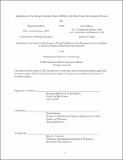| dc.contributor.advisor | David M. Geltner. | en_US |
| dc.contributor.author | Bulloch, Benjamin (Benjamin Edward) | en_US |
| dc.contributor.author | Sullivan, John | en_US |
| dc.contributor.other | Massachusetts Institute of Technology. Center for Real Estate. Program in Real Estate Development. | en_US |
| dc.date.accessioned | 2010-05-25T19:20:18Z | |
| dc.date.available | 2010-05-25T19:20:18Z | |
| dc.date.copyright | 2009 | en_US |
| dc.date.issued | 2009 | en_US |
| dc.identifier.uri | http://hdl.handle.net/1721.1/54851 | |
| dc.description | Thesis (S.M.)--Massachusetts Institute of Technology, Program in Real Estate Development in Conjunction with the Center for Real Estate, 2009. | en_US |
| dc.description | This electronic version was submitted by the student author. The certified thesis is available in the Institute Archives and Special Collections. | en_US |
| dc.description | Cataloged from student submitted PDF version of thesis. | en_US |
| dc.description | Includes bibliographical references (p. 93-95). | en_US |
| dc.description.abstract | This thesis presents a pioneering application of an engineering systems framework, the Design Structure Matrix (DSM), to model the real estate development (RED) process. The DSM is a process modeling tool that originated recently in the branches of engineering systems and management science, and is primarily used to study product development processes. The DSM is an n-squared graphical matrix representation of a process that is particularly well suited to model both the sequential and iterative informational relationships between tasks in a product development process. The similarities between product development and the real estate development process make DSM an excellent fit for applying the DSM. The thesis first reviews existing models of the RED process but finds them lacking a combination of granularity and ability to model the highly iterative nature of the RED process. This limits their effectiveness for conveying information useful to practitioners. No previous RED model describes the process at a task level or has the ability to model iterative or sequential information flows between tasks. The DSM developed in this thesis first presents a normative or baseline model of a RED project. The model was developed through the participation and assistance of MIT/CRE industry partner, Jones Lang LaSalle (Boston Office). Through a series of interviews and meetings, the authors first developed a Six Stage Event Sequence model of RED with decision-gates found to occur during the process. The six stages were then expanded with JLL's assistance into a table of 91 individual tasks necessary for successful completion of a RED project. | en_US |
| dc.description.abstract | (cont.) Finally, again with JLL's engagement, the 91X91 'Baseline' RED process DSM was constructed, identifying 1,148 planned informational inter-task interactions (out of 8,281 potential interactions). The 'Baseline' DSM model was then manipulated to highlight important aspects of the RED process including the iterative and interdisciplinary nature of RED. Several typical development scenarios are then modeled to highlight the utility of DSM as a management tool in practice. The models show how unplanned iteration can become a significant cause of project risk and failure. They also highlight the risks and opportunities that task re-sequencing can have on a project. This thesis demonstrates the DSM to be a useful and effective model of the RED process enabling new insight and understanding. The highly complex and iterative RED process can be graphically modeled in great detail in a visually appealing manner. Additionally, the RED DSM proves to be an adaptive and manipulative tool that allows for a multi-layer grasping of the RED process, able to assist in project management, change management, identification of risks and opportunities, and firm-level organizational structure and procedures. Additionally, the RED DSM model proves to be a useful pedagogical device for teaching real estate students. | en_US |
| dc.description.statementofresponsibility | by Benjamin Bulloch and John Sullivan. | en_US |
| dc.format.extent | 124 p. | en_US |
| dc.language.iso | eng | en_US |
| dc.publisher | Massachusetts Institute of Technology | en_US |
| dc.rights | M.I.T. theses are protected by
copyright. They may be viewed from this source for any purpose, but
reproduction or distribution in any format is prohibited without written
permission. See provided URL for inquiries about permission. | en_US |
| dc.rights.uri | http://dspace.mit.edu/handle/1721.1/7582 | en_US |
| dc.subject | Center for Real Estate. Program in Real Estate Development. | en_US |
| dc.title | Application of the Design Structure Matrix (DSM) to the real estate development process | en_US |
| dc.type | Thesis | en_US |
| dc.description.degree | S.M. | en_US |
| dc.contributor.department | Massachusetts Institute of Technology. Center for Real Estate. Program in Real Estate Development. | en_US |
| dc.contributor.department | Massachusetts Institute of Technology. Center for Real Estate | |
| dc.identifier.oclc | 609634779 | en_US |
